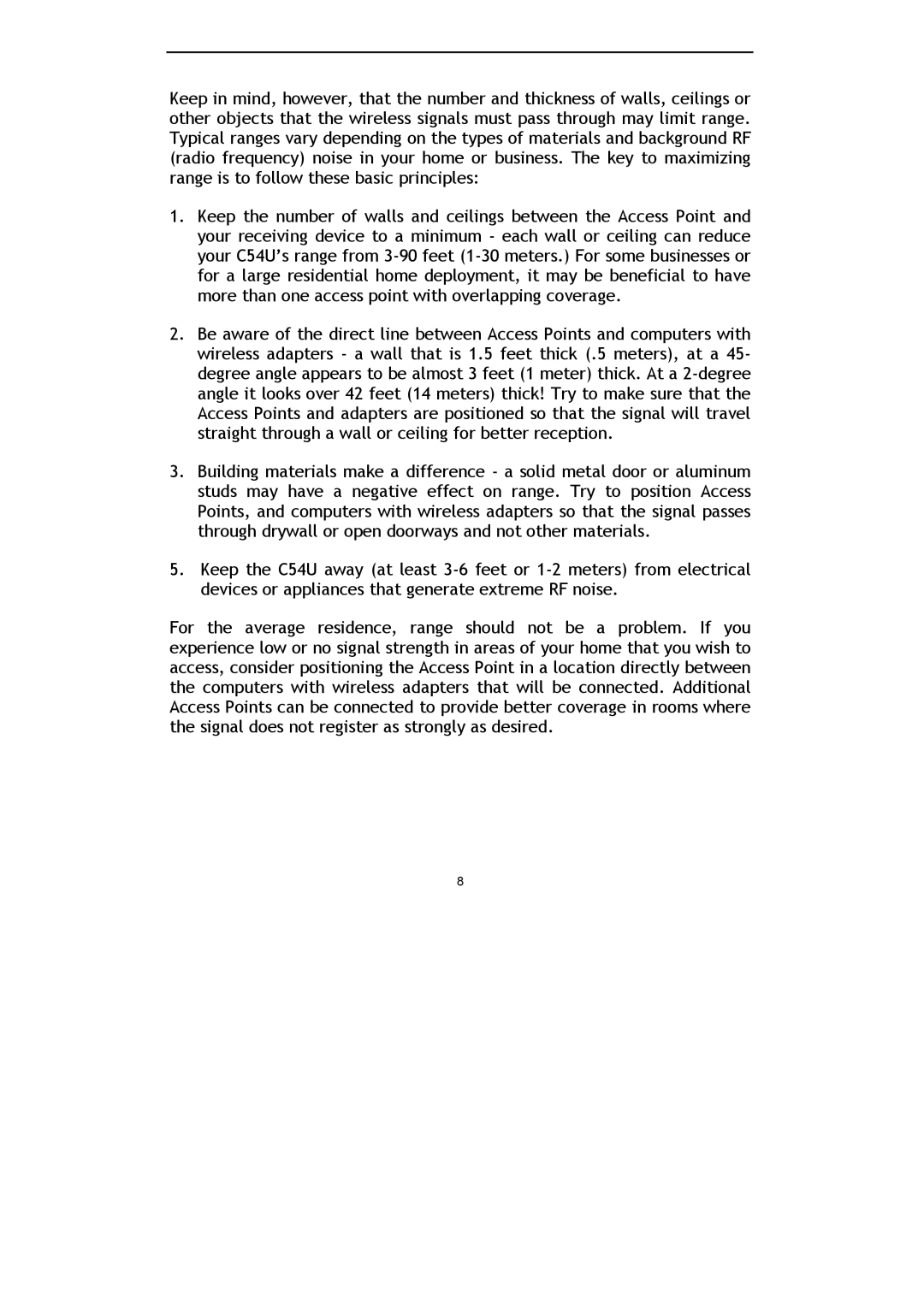Keep in mind, however, that the number and thickness of walls, ceilings or other objects that the wireless signals must pass through may limit range. Typical ranges vary depending on the types of materials and background RF (radio frequency) noise in your home or business. The key to maximizing range is to follow these basic principles:
1.Keep the number of walls and ceilings between the Access Point and your receiving device to a minimum - each wall or ceiling can reduce your C54U’s range from
2.Be aware of the direct line between Access Points and computers with wireless adapters - a wall that is 1.5 feet thick (.5 meters), at a 45- degree angle appears to be almost 3 feet (1 meter) thick. At a
3.Building materials make a difference - a solid metal door or aluminum studs may have a negative effect on range. Try to position Access Points, and computers with wireless adapters so that the signal passes through drywall or open doorways and not other materials.
5.Keep the C54U away (at least
For the average residence, range should not be a problem. If you experience low or no signal strength in areas of your home that you wish to access, consider positioning the Access Point in a location directly between the computers with wireless adapters that will be connected. Additional Access Points can be connected to provide better coverage in rooms where the signal does not register as strongly as desired.
8
